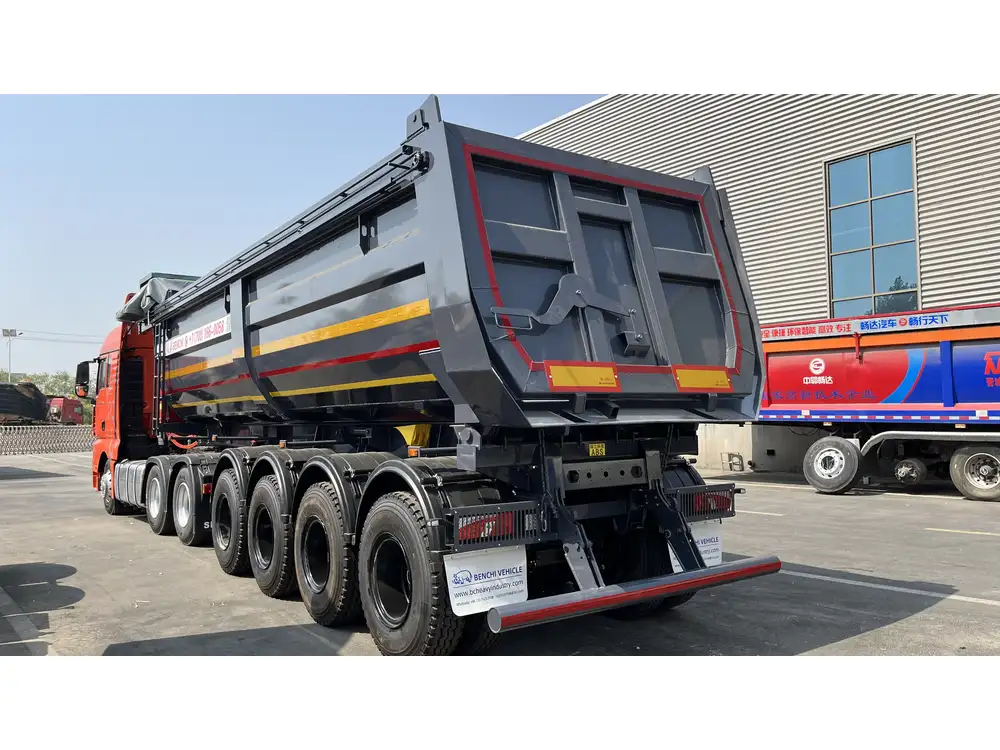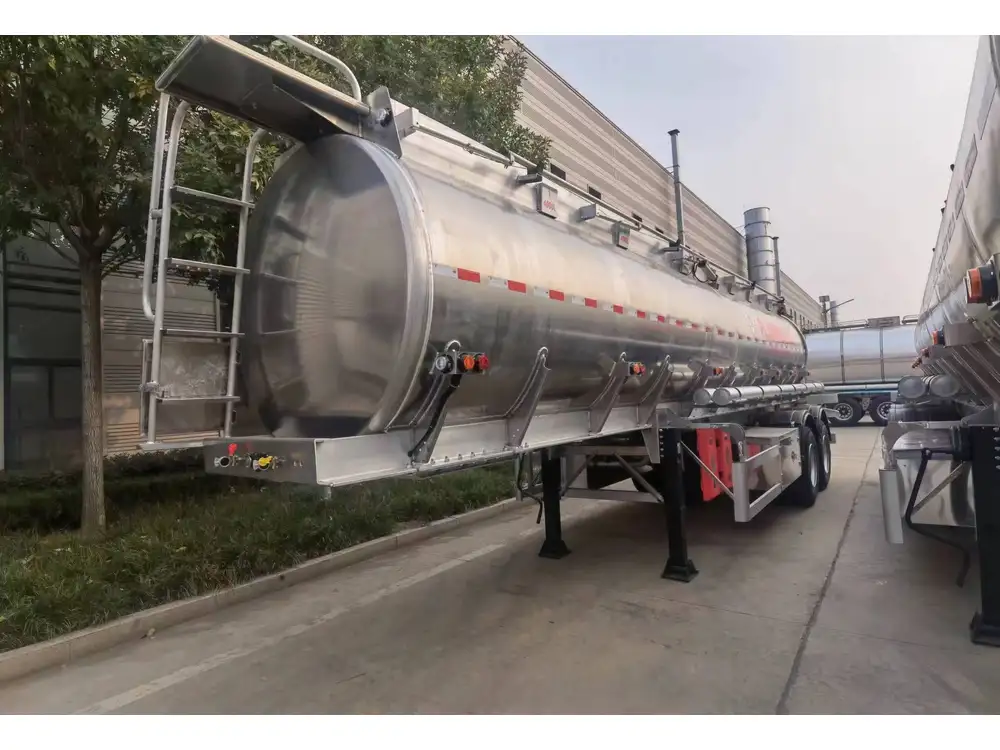When traversing the expansive highways of the United States, one might occasionally ponder: What does a semi truck and trailer weigh? This question isn’t merely a matter of trivial knowledge—it underpins critical factors in logistics, legal compliance, and safety protocols within the transportation industry.
The Basics of Weight Measurements in the Trucking Industry
To fully grasp the significance of a semi truck’s weight, it’s essential to differentiate between the various weight categories that apply to these massive vehicles. We categorize these weights as follows:
| Weight Classification | Definition |
|---|---|
| Curb Weight | The weight of the truck or trailer when it’s empty, including all fluids (like oil and fuel) but not carrying any cargo. |
| Gross Vehicle Weight (GVW) | The total weight of the vehicle, including all cargo, passengers, and the vehicle itself at maximum capacity. |
| Gross Combination Weight (GCW) | The total weight of the combination of a truck and its attached trailer, fully loaded to maximum capacity. |
| Payload Capacity | The maximum weight of cargo the truck or trailer can safely carry, calculated by subtracting curb weight from that of the GVW or GCW. |
Understanding these classifications allows operators and fleet managers to make informed decisions regarding loading procedures, legal limits, and vehicle safety inspections.
Curb Weight of Semi Trucks and Trailers
Typically, the curb weight of a semi truck varies considerably, influenced by several factors including its make, model, and specific configurations. On average:
- Empty Semi Truck Weight: Ranges from 10,000 to 25,000 pounds.
- Empty Semi Trailer Weight: Generally weighs between 3,000 and 15,000 pounds.
Thus, the curb weight can fluctuate, depending on the specific vehicle design and equipment installed.

Notable Variants in Weight
Tractor Unit Variations:
- Day Cab: Generally lighter due to the lack of a sleeping compartment—curb weight around 15,000 to 20,000 pounds.
- Sleeper Cab: Heavier, with added amenities for long hauls—curb weight around 20,000 to 25,000 pounds.
Trailer Types:
- Flatbed Trailers: Usually lighter, weighing between 3,000 to 7,000 pounds.
- Enclosed Trailers: Heavier due to their construction, averaging approximately 5,000 to 15,000 pounds.
Understanding these nuances helps fleet managers to optimize their fleet based on load requirements.
Gross Vehicle Weight (GVW) and Gross Combination Weight (GCW)
The Gross Vehicle Weight (GVW) is critical for ensuring compliance with road regulations. Depending on the type of semi truck and trailer combination, the Maximum GVW permissible on major highways usually caps at 80,000 pounds.
Here’s a dual consideration:
- For a Standard Tractor-Trailer Rig:
- Tractor GVW: 40,000 pounds (with a combined weight reaching the highway limit).
- Trailer Max: Generally around 45,000 pounds but varies by type and load.
Both weight classifications tie into federal regulations, specifically enforced by the Federal Motor Carrier Safety Administration (FMCSA), mandating that loads not exceed defined limits for public road safety.
Regulatory Implications
Heavy loads increase wear and tear on infrastructure and elevate accident risks. Consequently, adhering to the maximum limits—subject to fluctuating state regulations—ensures the longevity of highways and the safety of other road users.

The Importance of Payload Capacity
Understanding the payload capacity is crucial for operators looking to maximize efficiency without breaching compliance.
| Truck Type | Typical Curb Weight | Maximum GVW | Payload Capacity |
|---|---|---|---|
| Day Cab | 15,000 lbs | 80,000 lbs | 65,000 lbs |
| Sleeper Cab | 20,000 lbs | 80,000 lbs | 60,000 lbs |
In this case, exceeding the designed payload capacity can lead to hefty fines, damaging the vehicle, compromising safety, and adversely impacting the load delivery schedule.
Impact of Trailer Types on Weight
The choice of trailer significantly influences the total weight carried.
- Reefer Trailers: Refrigerated trailers can weigh between 10,000 to 15,000 pounds when empty, affecting overall load calculations.
- Tanker Trailers: These heavily constructed trailers can have a curb weight of 30,000 to 40,000 pounds, specifically designed for transporting liquids efficiently and safely.
Calculating Total Weights: Practical Examples
To clarify how these weight categories interact, let’s examine a couple of illustrative scenarios.

Scenario 1: Standard Dry Van
A typical yard configuration might include a sleeper cab weighing 20,000 pounds attached to a dry van trailer of 12,000 pounds:
- Curb Weight: 20,000 lbs (Truck) + 12,000 lbs (Trailer) = 32,000 lbs
- Payload Capacity: Considering the maximum GVW of 80,000 lbs:
- 80,000 lbs – 32,000 lbs = 48,000 lbs payload capacity.
Scenario 2: Refrigerated Load
In the case of a refrigerated unit:
- Curb Weight: 22,000 lbs (Truck) + 14,000 lbs (Reefer) = 36,000 lbs
- Payload Capacity:
- 80,000 lbs – 36,000 lbs = 44,000 lbs payload capacity.
Weigh Stations: The Role They Play
Weigh stations serve a dual purpose—they ensure that commercial vehicles comply with state and federal weight regulations while helping prevent road damage caused by overloaded trucks.
Key Functions of Weigh Stations:
- Monitor compliance with weight limits.
- Inspect vehicles for safety equipment and maintenance compliance.
- Educate drivers on weight regulations and consequences of violations, including fines and vehicle impoundment.

Load Management: Best Practices for Operators
Effective load management is vital for maintaining legal compliance while optimizing operational capacity. Here are several best practices that can aid in this endeavor:
Accurate Weight Measurement: Consistently weigh loads prior to departure using certified scales. Employ onboard scales for immediate accuracy.
Load Distribution: Properly distribute the load on the trailer to prevent tilting or sway during transportation. This balances the weight across axles, further preventing equipment wear.
Regular Maintenance Checks: Perform systematic checks on tires, brakes, and suspension systems to ensure they can handle the vehicle’s load effectively.
Education and Training: Regularly educate drivers about load capacity and the importance of staying within designated limits.
Utilization of Technology: Consider leveraging Load Management Software (LMS) that helps in planning logistics based on truck and trailer capacities.
Conclusion: Weight Matters
In summary, understanding the complexities and specifics of semi truck and trailer weights is essential for any operator within the logistics field. From ensuring compliance with regulations to maximizing operating capacity, knowledge around curb weight, GVW, and payload capacity directly influences the efficiency and safety of transport operations.
By committing to rigorous load management and adhering to weight regulations, fleet operators can enhance their business outcomes, safeguarding their investments while contributing positively to road safety and infrastructure integrity. Maintaining awareness of evolving regulations ensures viability in an industry that continues to grow and innovate.
Ultimately, whether considering a new purchase or planning a logistics strategy, recognizing what does a semi truck and trailer weigh isn’t just a detail; it’s a cornerstone of intelligent and responsible fleet management.



